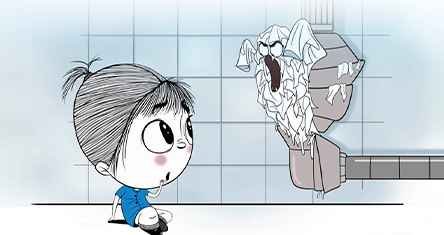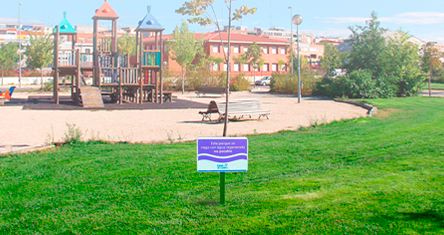Blog
DE MADRID Y DEL GRIFO
In our blog you will find tips to save water and learn how we work to convey it with the best quality to your tap in Madrid
DE MADRID Y DEL GRIFO
In our blog you will find tips to save water and learn how we work to convey it with the best quality to your tap in Madrid
FROM MADRID'S TAP

Suscríbete al blog
RECLAIMED: A SECOND OPPORTUNITY FOR WATER
Reclaimed water is tremendously valuable as it can be used for a variety of different purposes that don’t necessarily require drinking water, such as watering parks and gardens. And, at home, we can also give a second life to the water we use

Perhaps, as you were walking through one of Madrid’s numerous parks, you may have spotted a sign on the grass with a message like this: “Este parque se riega con agua regenerada no potable” (This park is irrigated with non-potable reclaimed water). Which might have made you stop and think: what’s so special about that water? In reality, quite a lot, because this is water that’s doing a new job, that has found a second life, beyond the one it had before.
As you may know, wastewater from homes, industry and agriculture is piped through urban drainage networks to WWTPs (Wastewater Treatment Plants). That’s where we purify it so we can put it back into rivers and streams without harming the environment. During the purification process, we remove all the rubbish, floating fats and, in general, all the thick residues from the water, as well as decantable materials and biodegradable organic matter.
However, we can take this process a step further, for greater efficiency. Some of our wastewater treatment plants give the wastewater an additional treatment process, called tertiary treatment. This purifies the water even more, so that even though it’s not suitable for human consumption we can use it for other purposes. For example, watering parks and gardens, street cleaning, recharging aquifers and maintaining wetlands, irrigating pastures and fields of crops.
We call this kind of water reclaimed, and it has a number of important advantages. The most important benefit is that we can keep the best quality water for the most demanding uses, such as producing drinking water. Since water is a limited resource, reusing treated wastewater is very important as it contributes to increasing the net amount of water available in the region. By using reclaimed water we reduce the consumption of drinking water, which enables us to achieve really large savings.
Canal de Isabel II has 23 water recycling plants where we produce reclaimed water, and in 2019 this will rise to 25. We also operate a dedicated network of more than 500 km of pipes to distribute the reclaimed water.
In 2018, we used this tertiary treatment for 25 % of the water we purify, generating a total of 125 hm3 of reclaimed water. Of that amount, 113 hm3 was used to improve the quality of rivers, and the remaining 12 hm3 were for industrial use, street cleaning and irrigating parks and gardens. The reclaimed water is used to irrigate more than 200 parks and green spaces in the Madrid Region.
HOW TO REUSE WATER AT HOME
Just as reclaimed water facilities do, we can also give a second opportunity to the water we consume at home. It’s a matter of putting into practice small gestures in our daily household chores which, in the end, also contribute to savings. Here are some tips that can be useful:
- Use the cold water from the shower: When you have a shower, you often waste a lot of water as it goes down the drain while you wait for the warm water to come through. You can avoid this by using a bucket to collect the cold water that comes out at the beginning. Afterwards, you can use it to water the garden or wash the dishes or the floor. To make this easier, there are special bags on sale that hang from the shower and make it easier to collect, store and transport this water for later use.
- Don’t throw away the water from boiling vegetables: after boiling vegetables, we usually pour away the water down the drain. Instead of throwing it away, you can use it to water plants (as long as you haven’t added salt). This is an easy way to save water, and it gives extra nutrients to your plants.
- Collect rainwater: if you have a garden or balcony you can use buckets, containers or some other collection system to store rainwater and then use it to clean the floor or fill the toilet cistern.
- Use the water from the air conditioner for ironing: the condensation water that comes out of the air conditioner when it is operating is practically like distilled water (it contains no hardness) making it ideal for ironing.
You can find more information and water saving tips in We take care the water.
3 comments
JOSE 2024-11-19 13:09:33.878 2024-11-19 13:09:33.878
Canal Isabel II 2024-11-20 08:23:00.0 2024-11-20 08:23:00.0
Cristina Gómez 2021-06-09 11:50:44.948 2021-06-09 11:50:44.948
Luis 2021-05-29 11:49:35.514 2021-05-29 11:49:35.514
Suscríbete al blog
